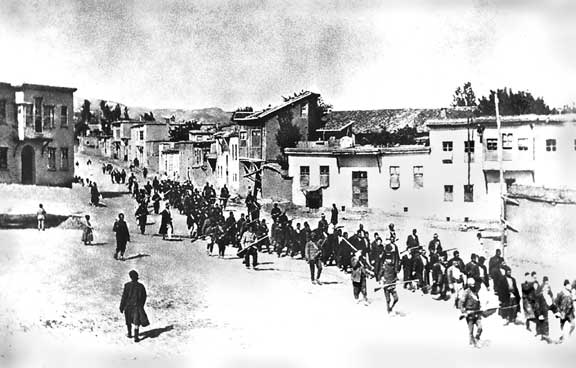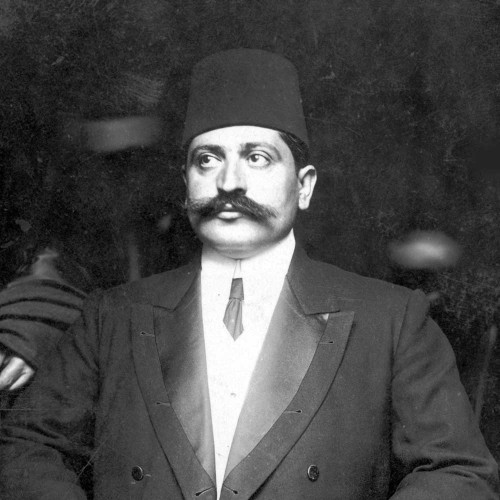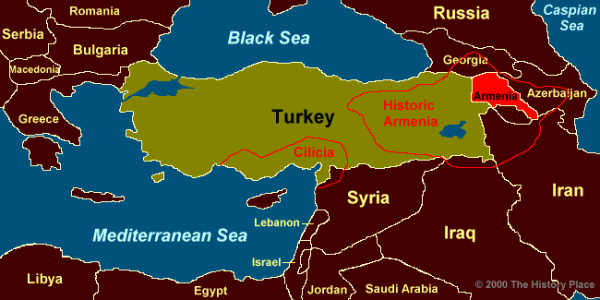April 24 marks the centenary of the start of the genocide of the Armenian population in the Ottoman Empire during World War I. Historians estimate that as many as 1.5 million Armenians were killed in state-organized violence between 1915 and 1922, some in massacres, others in forced marches to the Syrian desert that left them starved to death.
That this constituted genocide is the official view of Canada and about 20 other countries — though not of Britain, Israel or the United States.

Reuven Rivlin, the president of Israel, addressing the United Nations General Assembly this past January during its commemoration of the Nazi Holocaust, spoke of “100 years of hesitation and denial” when it came to the Armenian massacres. Officially, however, the Jewish state neither recognizes nor denies the Armenian genocide, in order not to offend Turkey. Given the recent deterioration in relations with Ankara, this may change.
Meanwhile, on April 12, Pope Francis, at a special mass in the Armenian Catholic rite in St. Peter’s Basilica in Rome to mark the anniversary, described the mass killings as the “first genocide of the 20th century.”
The Pope was joined by Kerekin II, the Supreme Patriarch of the Armenian Apostolic Church, Armenian President Serzh Sargasyan, and other dignitaries. “Bishops and priests, religious women and men, the elderly and even defenceless children and the infirm were murdered,” the Pope said.

This touched off a diplomatic furor with Turkey. President Recep Tayyip Erdogan condemned the Pope’s words and warned him to “not repeat this mistake.” Ankara recalled its ambassador to the Vatican.
“We will not allow historical incidents to be taken out of their genuine context and be used as a tool to campaign against our country,” Erdogan declared. “The Armenian diaspora is trying to instill hatred against Turkey.”
Last year, Erdogan offered “condolences” to the families of those who died and called the events “inhumane.” But Turkey rejects the use of the term genocide to describe the killings, arguing it was part of a larger war in which ethnic Turks, Kurds, and other Muslims also died.
Also, fearing that the Christian Armenian population was planning to align with Russia, the Ottoman Turks took “necessary measures” to counter Armenian separatism.
So was the massacre of the Armenians a genocide? It depends on the definition of the word, which was coined by a Polish Jewish lawyer, Raphael Lemkin, during World War II.
When he died in 1959, Lemkin was nearly finished writing an autobiography. In 2013, Yale University Press published the book, entitled Totally Unofficial.

Lemkin described as a formative experience the 1921 trial in Berlin of Soghomon Tehlirian, an Armenian accused of murdering a former Ottoman minister, Mehmet Taalat Pasha, one of the architects of the killings.
Though Lemkin himself later escaped death by fleeing Poland during the Nazi invasion and coming to the United States, the bulk of his family did not. Close to 50 of his relatives perished in the Holocaust.
Lemkin’s life’s work was to make the destruction of a people illegal. His book Axis Rule in Occupied Europe, published in 1944, first coined the term “genocide,” identifying it as “actions aiming at the destruction of essential foundations of the life of national groups, with the aim of annihilating the groups themselves.”
Thanks to his groundbreaking work, in 1948, the United Nations passed the Convention on the Prevention and Punishment of the Crime of Genocide, which defined genocide as “acts committed with intent to destroy, in whole or in part, a national, ethnic, racial or religious group, as such.”
When Lemkin was asked in February 1949, just after the Convention was ratified, why he became interested in genocide, he answered, “Because it happened so many times. It happened to the Armenians.”
There is much room for debate as to when a crime rises to the definition of genocide. Ethnic cleansing, massacres, and many other war crimes, while reprehensible, are not the same as genocide, even if they involve large numbers of deaths. What matters is the “intent” to destroy a group as such.
In this case, the evidence is incontrovertible: “Reports from widely scattered districts indicate systematic attempts to uproot peaceful Armenian populations,” read a telegram from the American embassy in Constantinople to the State Department in Washington in 1915, with “wholesale expulsions and deportations from one end of the Empire to the other,” designed “to bring destruction and destitution on them.”
The American ambassador, Henry Morgenthau, asked the United States government to intervene, but the U.S. was not a participant in World War I at the time. He resigned in 1916, and in his 1918 book, Ambassador Morgenthau’s Story, he wrote that when the Turkish authorities gave the orders for these deportations, “they were merely giving the death warrant to a whole race; they understood this well, and, in their conversations with me, they made no particular attempt to conceal the fact.”
Turkey may today deny this was the case, but most historians agree that the Armenian massacres do qualify as genocide.
Henry Srebrnik is a professor of political science at the University of Prince Edward Island.


